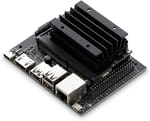In the past, artificial intelligence (AI) has been delegated to powerful computing machines due to the intense amount of processing power needed to train AI models. Because of this, AI applications have been limited in terms of size. Workarounds exist when creating smaller AI projects, but for the most part, accuracy and speed are at odds with computing power and price.
Nvidia has been a market leader in the area of AI, focusing on bringing AI to professional developers with their Jetson line. In March 2019, the Jetson Nano was released as a low-cost addition to the Jetson line, aimed at bringing AI to the masses, especially makers and educators.
Taking inspiration from the Raspberry Pi 4, the Jetson Nano is a single-board computer with a small form factor, accessible GPIO pins, and common USB and display outputs. Under the hood, the star of the show is the GPU, a 128-CUDA core built upon their Maxwell architecture. This GPU is specifically designed for running machine learning algorithms and is based on the processors from the original Jetson line.
The open nature and low cost of the board have prompted many developers to pick up the Nano to incorporate AI into their projects. In this article, we’ll take a look at some amazing projects from around the web that are focused on the Nano as a computing core. Let’s get started!
Robots
First up, we have some very clever robots. From a Spot-inspired dog robot to a talking teddy bear, there’s something for everyone’s nightmares here.
Turtlebot Robot
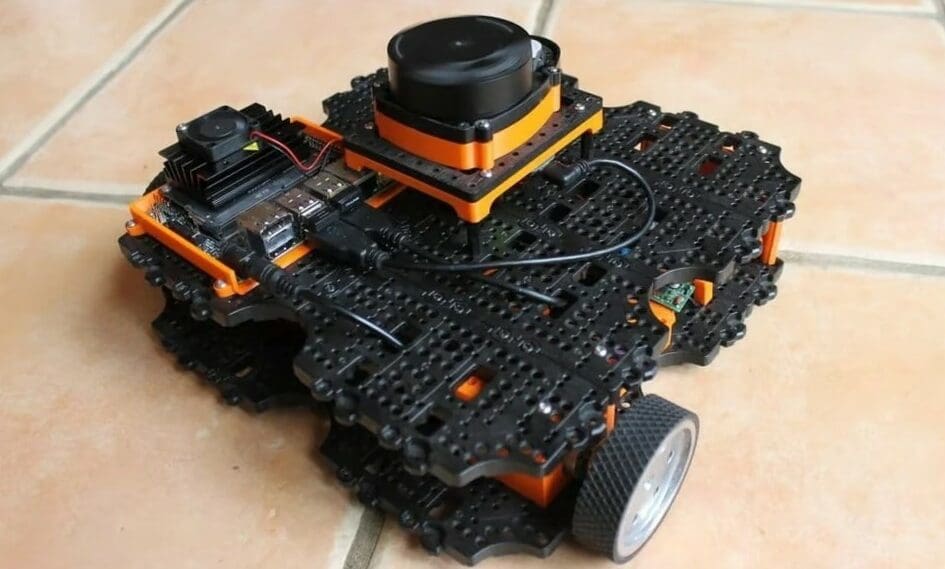
A Turtlebot is a basic platform with robotic functionalities. This project is considered beginner-friendly, as assembling the electronics, programming, and mechanics will give you an idea of the field. However, how advanced you want to go after that is up to you.
The build process will include 3D printing, assembling the different components, soldering, integrating electronics, and compiling code on Arduino. You can customize it with modules and add more functionality to deepen its capabilities. The chassis for this project can be bought or 3D printed. If at any point you find yourself stuck, you can always ask the creator questions.
- Difficulty: Beginner
- Designer: matop_m
- Project pages: Instructables, GitHub, Onshape
- Core components: Arduino Due, Proto-board, 2x 12-V DC motors with encoders, L298N motor driver
Robot Nano Hand
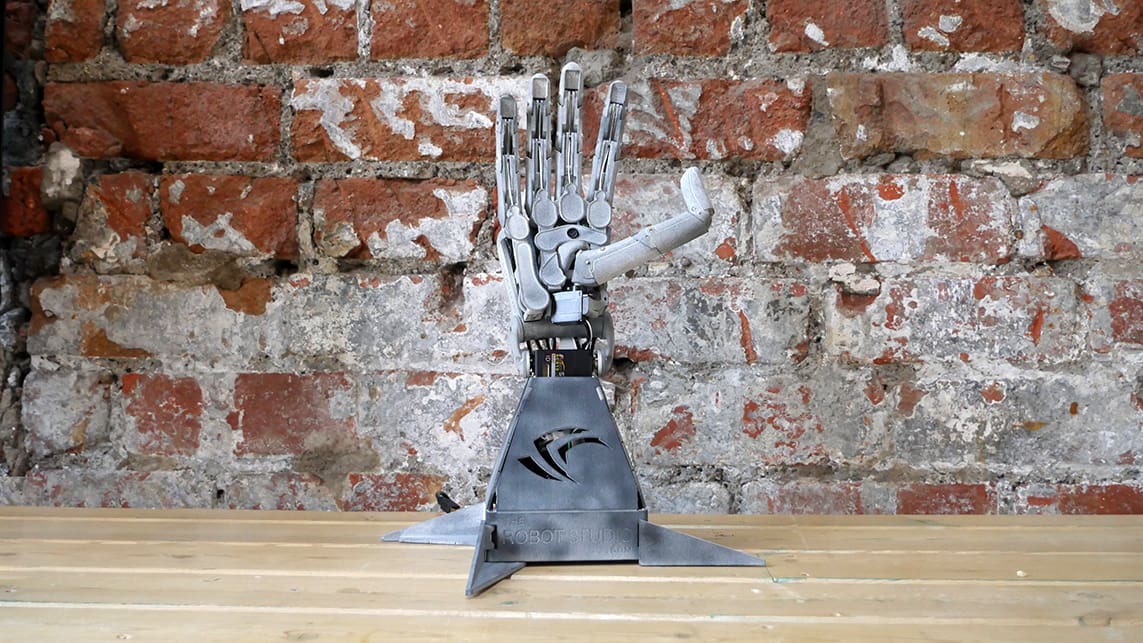
This is an open-source 3D printed humanoid hand you can control using gesture recognition and AI. The project is by Rob Knight of The Robot Studio, in collaboration with Silicon Highway and Codethink. Rob Knight is well known for the creation of functional human anatomy-inspired robots.
There’s a camera in the center of the robot’s palm. With this, you can record and replay your actions or train it to mimic hand movements in real time. The Jetson Nano handles all the processing and deep learning.
To get started with the project, you can gather all the parts and components in the bill of materials and find the software on GitLab. There’s also the option of purchasing all the 3D printed parts or printing them yourself!
- Difficulty: Intermediate
- Designer: The Robot Studio
- Project pages: Robot Nano Hand, Thingiverse
- Core components: Raspberry Pi V2 camera and cable, SCS0009 micro servos, SCS15 servo, PTFE tubing
Robottle
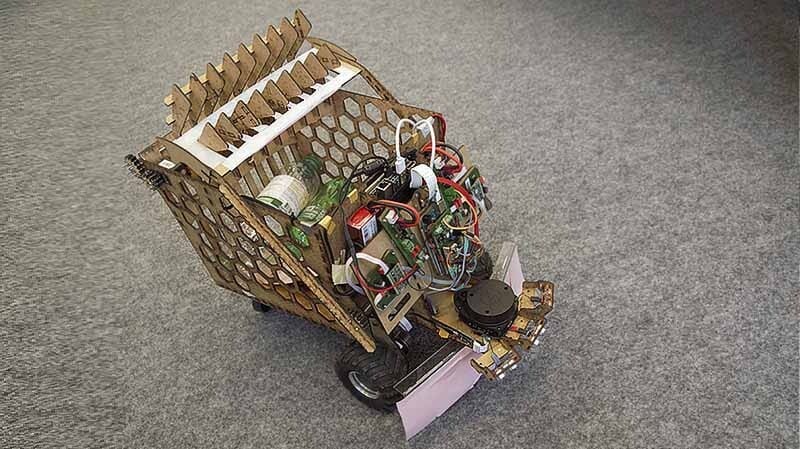
This next project is one that can really inspire big changes. After all, plastic bottles are a problem for the environment and consequently, a problem for creating a more sustainable world. This was developed as a semester-long educational competition project, where students Lorenzo Jacqueroud, Arthur Bricq, and Leonardo Mussa created a solution to clean environments of plastic bottles.
This robot needs to quickly collect bottles by overcoming small and different obstacles in an arena, then deposit them in a recycling area. To do this, the students created a robot that uses two processing units, one with the Jetson Nano responsible for high-level programming and another with an Arduino Mega for low-level programming and control, such as motors and ultrasound sensors. The Deep Neural Network is executed on the Jetson GPU to detect the bottles through a camera and also map the environment with the help of a lidar sensor.
This is not a simple project to replicate. However, if you’re looking for something to challenge your knowledge by building a robot with ROS2 on different nodes working together, it’s a good choice because it uses Python and provides the main components of the high-level code that Jetson uses to control the robot. The code for Arduino Mega is also provided, and at the end, you’ll be able to experiment with a powerful Bayesian algorithm, SLAM (Simultaneous Localization and Mapping).
- Difficulty: Intermediate
- Designers: A Bricq, L Mussa, L Jacqueroud
- Project pages: GitHub, YouTube, Nvidia Community
- Core components: Arduino Mega, lidar sensor, Raspberry Pi camera, ultrasonic sensors, servos, laser cut parts, other small electronic parts and components
SSL-Detector
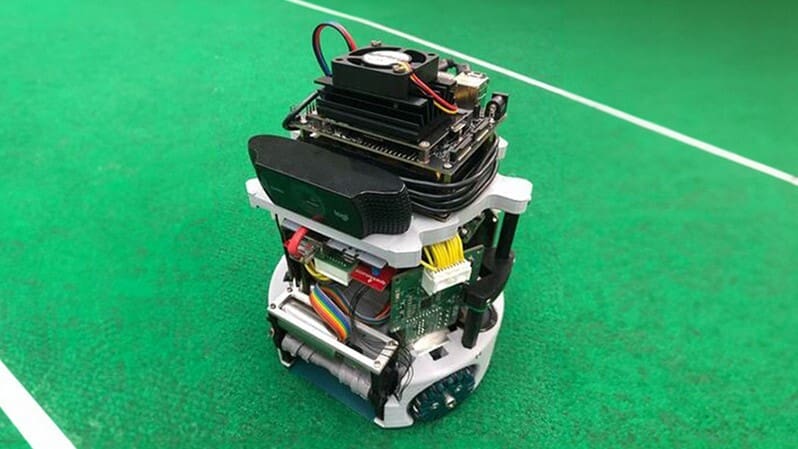
In 1997, the idea to create a team of robots capable of beating the human champions of the World Cup by 2050 took root. While it’s still a little ways away, several teams are further developing this mission in the RoboCup. There are two distinct divisions: one for the most advanced teams and one for the less competitive.
The construction of the robot varies according to the league and team, but they must follow rules and only use built-in sensors to detect objects, estimate their positions, pass the ball, and score goals autonomously, just like a human player. There are also different leagues for the sizes and types of robots. This project focuses on the Small Size League (SSL), which uses monocular vision to detect objects and estimate relative positions within the soccer field at distances of up to 3.5 meters at 30 fps with a model built on MobileNet v2 and optimized with TensorRT.
The SSL league is one of the oldest and focuses on the problem of intelligent multi-robot cooperation and control in a highly dynamic environment with a hybrid centralized/distributed system. The game is played in teams of 6 to 11 players, and each robot must fit into a circle 180 mm in diameter and be no more than 15 cm high. Since 2009, the league has decided to migrate to a shared vision system that can be used by all teams, called SSL-Vision, which processes data from four cameras located 4 m above the field. Each team can use a different set of hardware, as long as it complies with the various rules of the league. You can check out a match in this video.
- Difficulty: Expert
- Designer: RoboCup Small Size League (SSL)
- Project pages: GitHub, Nvidia Community, RobotCup
- Core components: A soccer robot that adheres to the SSL League rules, camera
JetAuto ROS Robot
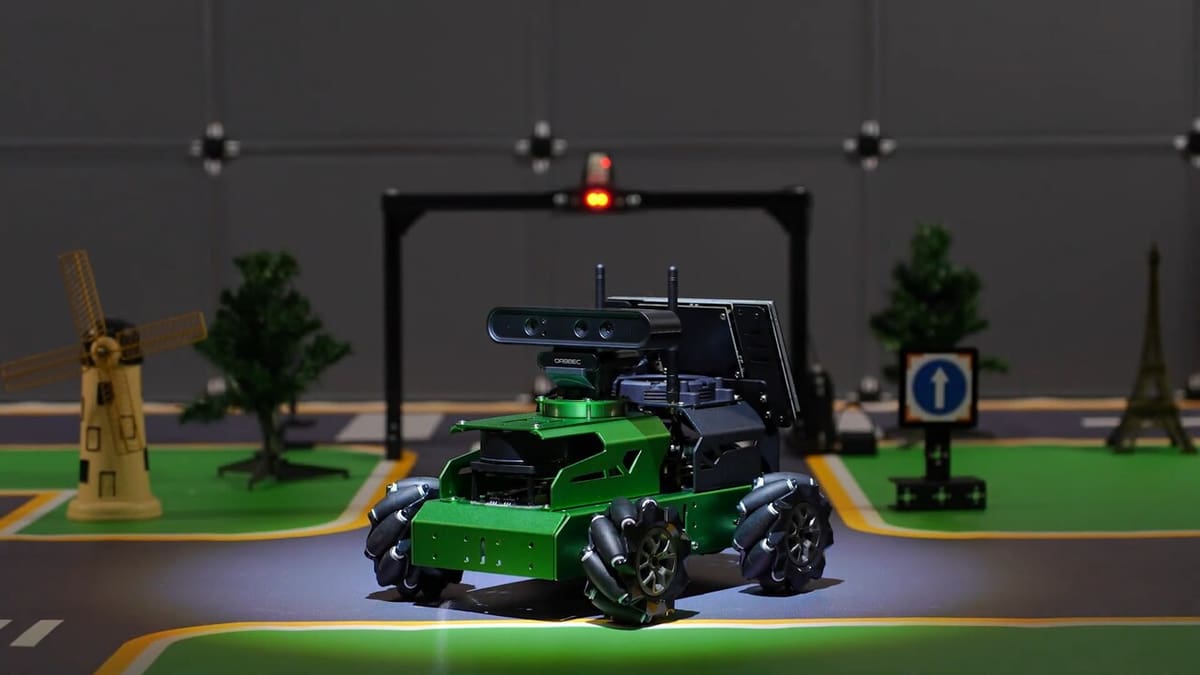
If you’re new to AI projects or just looking for a solid and mature hardware base, this project will definitely surprise you. Created by Hiwonder, the JetAuto ROS Robot is a kit that presents a precise balance between hardware robustness, software fluidity, and an ideal platform for future developments. Made with an anodized aluminum alloy structure and a 7-inch HD LCD touchscreen, it protects while also organizing the space for the components very well, making even a battery change or analysis a trivial task.
The clear and educational tutorials provided by the manufacturer make this project very accessible even for beginners, while also providing a sophisticated robotic platform powered by a Jetson Nano. Thanks to the support of ROS (Robot Operating System), users can pre-check motion algorithms, avoid costly errors, and visualize the entire navigation process through rviz, a virtual environment that accurately replicates the real world while testing the robot’s programming and behavior. Priced at around $660, this platform is a great choice as a basis for educational projects.
The highlight lies in the user interface and functionality, especially when it comes to integration with lidar and the depth camera. Combining the expanded vision provided by the camera and the precision of Lidar, JetAuto is capable of performing SLAM (Simultaneous Localization and Mapping) quickly and accurately. This means that, even in unfamiliar environments, the robot masterfully plans its path, avoiding obstacles and adjusting its route in real time. Thanks to the large number of advanced features, it’s possible to learn a lot from this platform, which can also, among other things, interact, recognize gestures, voice commands, and even facial expressions.
- Difficulty: Beginner
- Designer: Hiwonder
- Project pages: Hiwonder, Nvidia Community
- Core components: JetAuto ROS robot car kit
Ellee the Talking Teddy
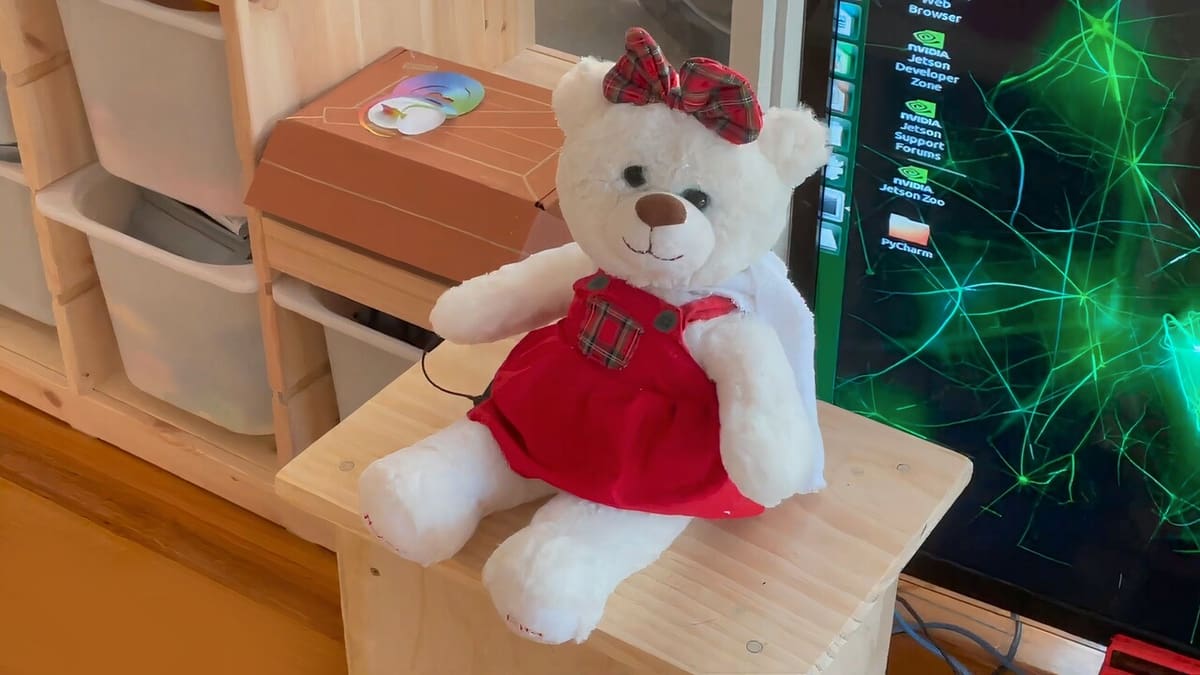
We all remember having imaginary conversations (which might have felt real) with our toys. Ellee is a robotic teddy bear that can move, react, and talk to you. The maker of Ellee made her using his son’s favorite old stuffed toy, a wooden cabinet, electronics, and a few other things. The goal was to build a robot that could recognize and converse with anyone.
Let’s see what goes into turning any teddy bear into a talking robot. Ellee’s facial recognition skills come from a Jetson Nano and a Sony camera. Using motors in the head, she can track and follow the faces she recognizes. After facial recognition, the next and final step is speech. You can make Ellee’s responses human-like using Google speech recognition, Amazon Polly, and AI. Having a Jetson Nano at the core of the robot really helps with this.
- Difficulty: Intermediate
- Designer: msubzero2000
- Project pages: GitHub, Medium
- Core components: A teddy bear, USB microphone and speaker, Sony IMX219 160, servo motors
JetMax Robotic Arm
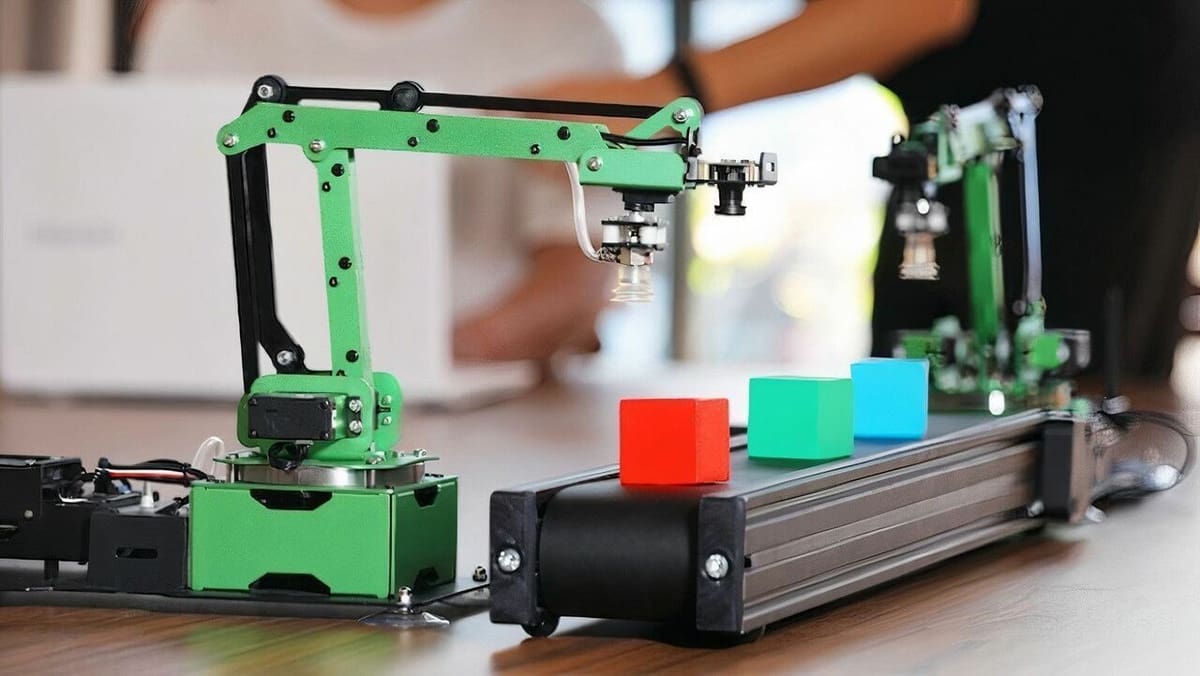
You might find it surprising how many robotic arms there are, differing in shape, size, material, configuration, and application. One notable kit is the JetMax robotic arm by Hiwonder: a completely open-source robot, with a Jetson Nano at the heart of it.
JetMax can perform basic tasks like picking-and-placing and drawing with ease. These are achieved through various control methods like PC, mobile app, mouse, and controller. However, with the Jetson Nano, the JetMax can perform more than basic tasks using AI. With a wide-angle camera housed near its end effector, it can carry out object classification and gesture recognition.
JetMax’s functionalities don’t stop there – these features are just the tip of the iceberg. The starter kit was available on Kickstarter, and if you run out of things to do with the JetMax, which will surely take you a while, you can take inspiration from the previously offered add-on kits and expansion packs. The most interesting add-on seems to be the vehicle chassis, which will make your JetMax mobile.
- Difficulty: Intermediate
- Designer: Hiwonder
- Project page: Hackster
- Core components: JetMax robot arm kit
AI Dog Robot
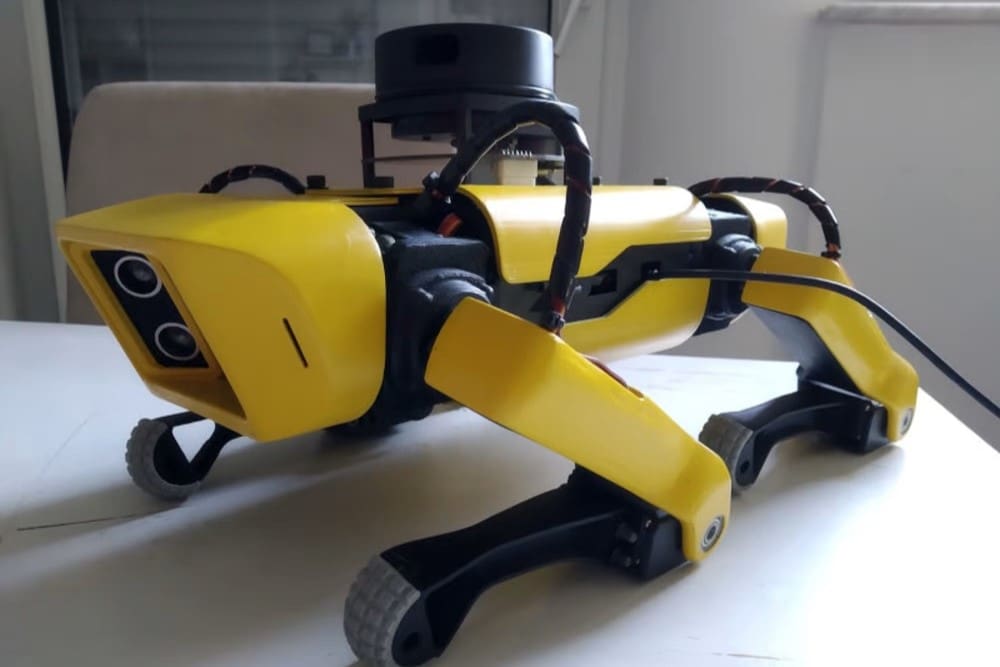
This cute little 3D printed robot is inspired by Spot from Boston Dynamics! While the original design was built around the Arduino Mega, fans of the design have expanded upon it to create the Spot Micro AI using the Jetson Nano for the kinematics of the robot puppy. The onboard sensors include lidar, sonar, and IMU sensors, as well as a Raspberry Pi camera.
While the project is still a work in progress, Florian invites anyone to contribute to it. Currently, PyBullet is used to simulate the kinematics, but Florian hopes to use the machine learning prowess of the Jetson Nano to enable the robot to move around an uncertain environment, citing a Google white paper on the topic. He also hopes to use the on-board camera for object detection.
- Difficulty: Advanced
- Designer: FlorianWilk
- Project pages: GitLab, SpotMicroAI
- Core components: MG996R servos, HC-SR04 ultrasonic sensors, MPU-6050 gyro sensor
Weed Removal Robot
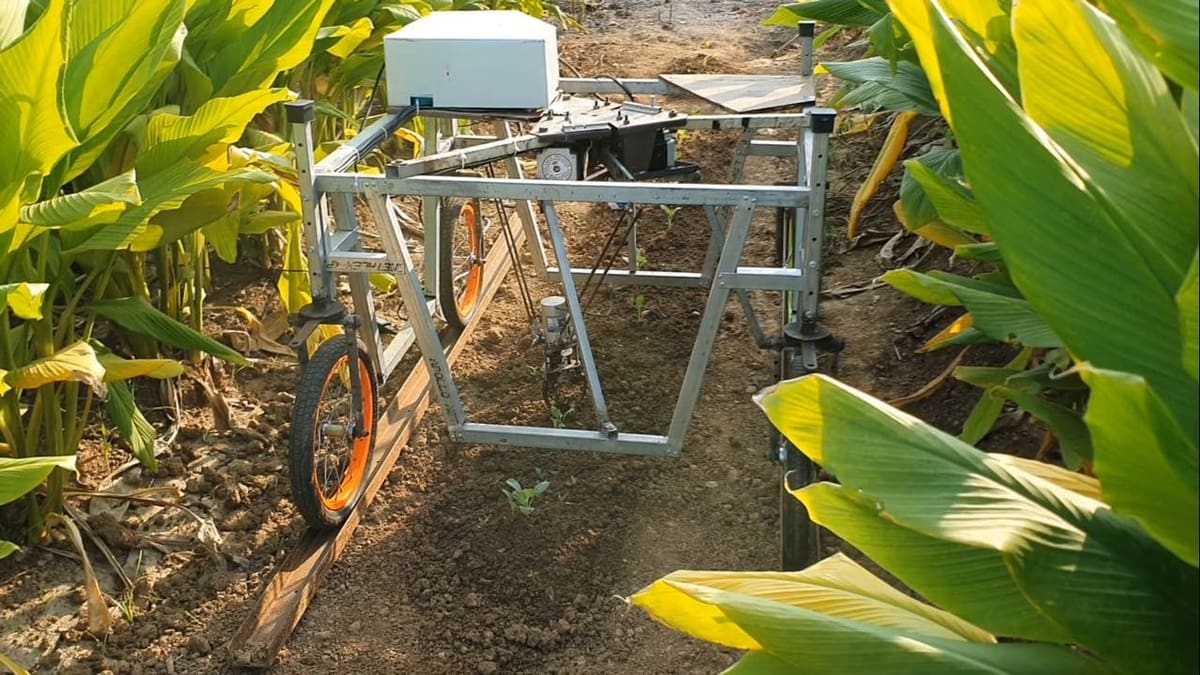
In the agriculture world, herbicides are a necessary evil with few alternatives to stamp out pesky weeds. Luckily, Hackster user auto roboculture has come up with one such alternative.
Introducing Nindamani, a robot with a green thumb! Using the Jetson Nano’s exceptional computer vision capabilities and a Raspberry Pi camera, Nindamani can drive over crops and determine the difference between wanted plants and weeds.
This impressive robot is fully ROS 2 (Robot OS) compatible and has a battery life of 8-10 hours. Using TensorFlow and Keras for the artificial intelligence platform, Nindamani uses a Mask-RCNN-based pre-trained model to achieve a weed detection accuracy of 85%!
- Difficulty: Advanced
- Designer: auto roboculture
- Project pages: Hackster, GitHub
- Core components: NEMA 34 stepper motor, Arduino Mega, Raspberry Pi camera, servo motor
Vehicles
These next projects are things that move, including drones and buggies and racing robots!
Nanosaur
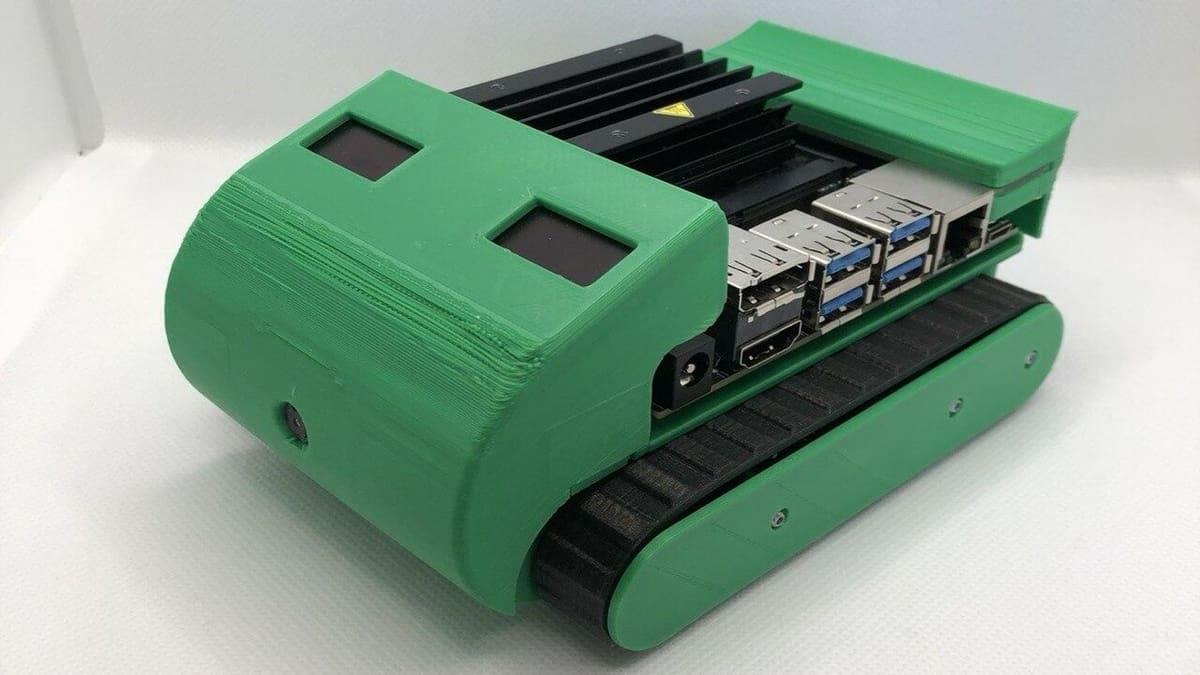
This project, which looks like a small tank-like robot, is actually a dinosaur robot. As it’s a small robot powered by a Jetson Nano, its maker appropriately named it “Nanosaur”. The robot is open source, and its parts are 3D printable.
Nanosaur is a good educational tool for learning about ROS 2 and AI in robotics. You’ll need 3D printed parts, a Jetson Nano, OLED displays, motors, and a few other components. You can find a well-written guide to its build and assembly on its main project page. After the robot is ready, there are a few tutorials available to get you started.
- Difficulty: Beginner
- Designer: Raffaello Bonghi
- Project pages: Hackster, Nanosaur
- Core components: OLED display module, motors, 3D printed parts
Rover

The RB-0 is a Jetson Nano rover that’s based on the same suspension mechanism as the newer NASA rovers, known as the rocker-bogie system. With a mostly 3D printed body and cheaper hobby-grade components, this project is perfect for a new Jetson Nano owner!
Hackster user plankton has outlined all the necessary components on the project’s GitHub page, and all the body components can be printed on a 200 x 200 mm size printer. Also, all the Python code is included, so the rover should be print-and-play!
- Difficulty: Beginner
- Designer: plankton
- Project pages: Hackster, GitHub
- Core components: Raspberry Pi camera module, MG90S servo, L12-R linear servos, PCA9685 servo driver board
Robotic Racing
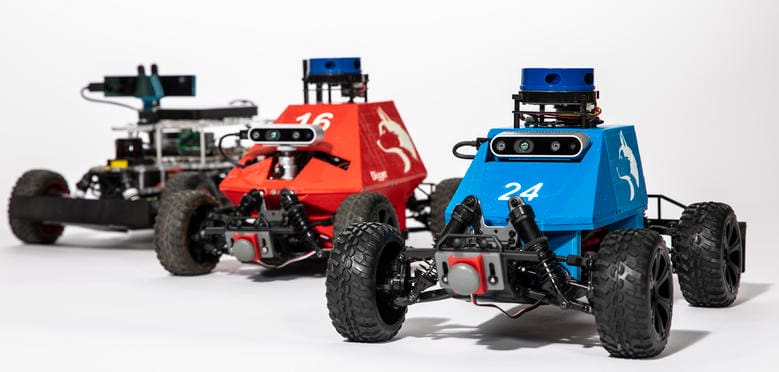
Want to get started with robotics? The multi-agent system for non-holonomic racing, or MuSHR for short, is a full-stack robotics platform specifically aimed at education and robotics research. Based on a list of off-the-shelf components, the MuSHR platform provides build instructions for every step of the project. Standard builds include components such as a RealSense 3D depth camera, a lidar sensor, bumper switches, and a 3D printed canopy!
Once you’ve built your robot, the MuSHR platform also provides tutorials for automating the car. Tutorials range from using the YOLO V5 to train models to detect other MuSHR cars, trajectory planning, and even deep learning and autonomous driving tutorials!
- Difficulty: Beginner
- Designer: Personal Robotics Lab at the University of Washington
- Project pages: MuSHR, GitHub
- Core components: RealSense camera, YDlidar, Redcat Blackout RC car
Search & Rescue Drone
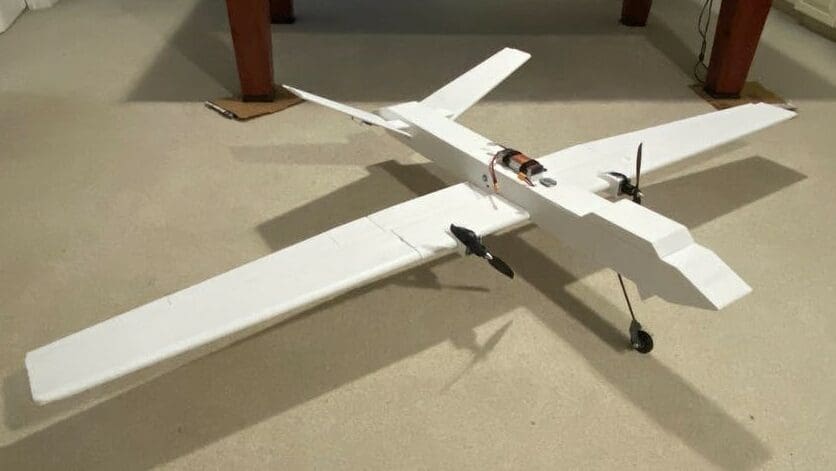
This project by Jon Mendenhall on GitHub combines the UAV capabilities of a PX4 Pixhawk flight controller with the computer vision capabilities of the Jetson Nano for an amazing automated search and rescue drone.
The image processing and recognition software running on the Nano is the Darknet tiny-YOLO V3 project from Joseph Redmon, chosen for its quick detection speed and low memory footprint. The Hackster guide provides step-by-step installation instructions for all the software.
The project separates the flight control and simply logs the absolute location of detected people based on the coordinates and altitude of the drone reported from the Pixhawk PX4. This allows the Jetson to interface with any autonomous flight control stack, like ArduPilot or DJI Pilot. Head over to the tutorial to build your own!
- Difficulty: Intermediate
- Designer: Jon Mendenhall
- Project pages: Hackster, GitHub
- Core components: Raspberry Pi camera module, PX4 Pixhawk (or other flight controller), USB battery bank
Mapping & Surveillance Rover
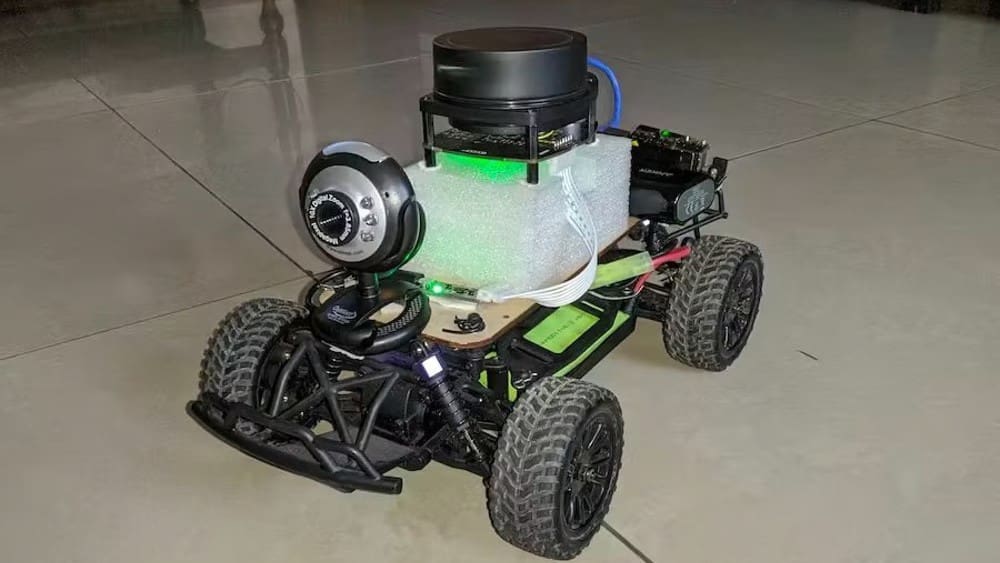
This 4-wheel bot can survey any unknown environment without human assistance. The project consists of an RC car mounted with a wireless camera running on a Jetson Nano.
As the author explains, this type of vehicle is useful for mapping unknown terrains, where it’s hard or dangerous for a human to get to without first knowing the terrain at hand. It’s also useful for disaster response, earthquakes, or mine cave-ins, as it allows the user to safely search for survivors and obtain their precise location.
- Difficulty: Advanced
- Designer: Dhairya Parikh
- Project page: Hackster
- Core components: Raspberry Pi V2 camera module, PCA9685 8-channel proportional valve controller
Detectors
The Jetson Nano is a great board to apply to visual detection projects, whether for 3D print failures or to improve your darts technique!
AI Pose Detection

One of the main strengths of the Jetson Nano is its aptitude for computer vision. Due to the comparatively high number of CUDA cores packed into the GPU, it’s able to analyze video feeds at a rather high frame rate. To show off these capabilities, Nvidia has created a demo that enables real-time pose detection.
Since training neural network models is time-consuming, this project includes pre-trained models for humanoid figures, which makes it easy for features like “left eye” or “right angle” to be detected. For the more adventurous, scripts are included for training your own models, allowing you to detect anything you’d like!
- Difficulty: Beginner
- Designer: Nvidia AI IoT
- Project page: GitHub
- Core components: Just a webcam!
Guitar Chord Detection
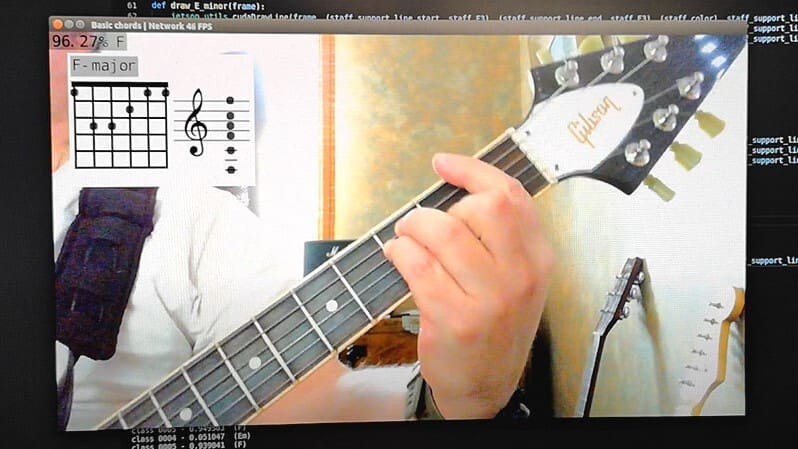
Playing a guitar may be something relatively simple for many musicians, but getting the hang of it can be quite challenging for beginners. With this project, the process will become easier. Here, a camera is used to detect the notes played, then display the chord map of the staff on a screen, making it easier to learn and get used to the notes on the staff.
Since the project currently uses only one camera to detect notes, this project may be somewhat limited to a few notes that have been learned by the intelligence. The notes that can currently be detected are A-minor, C-major, D-minor, E-minor, F-major, and G-major. It’s important to keep in mind that it’s necessary to create a Jetson inference project following specific instructions for using the ImageNet program.
- Difficulty: Intermediate
- Designer: R Waltzer
- Project pages: GitHub, Nvidia Community
- Core components: Jetson Nano, compatible camera
BabyWatcher
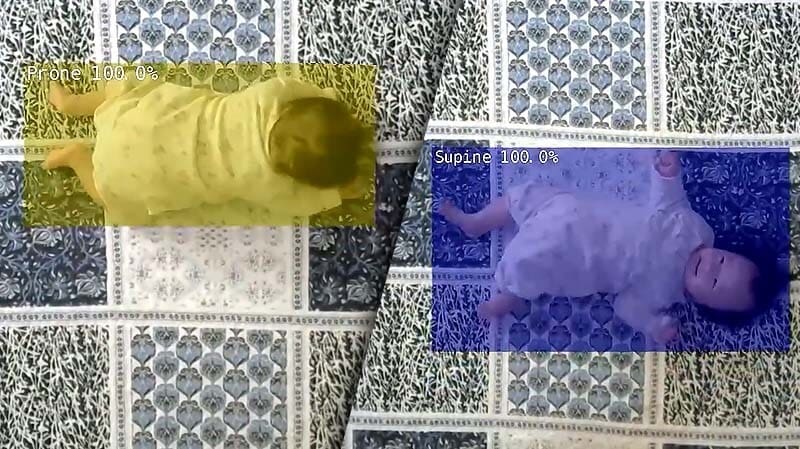
This next project is for newborns. Since turning and lying on their stomachs can be a suffocation risk, it’s essential to ensure that they’re able to sleep or stay in a prone position. The AI here keeps watch as babies sleep, which could help many parents have a more peaceful routine. Given the use of the JetPack 4.6 program, it’s important to carry out some preparations such as installing the SDK and running the docker hello container.
It’s important to note that this is not yet a perfect tool, and the designer still has some updates in mind, such as including a notification after a certain period of time in the prone position and a warning that the baby is leaving the frame (which is why the author uses detection and not classification). For the learning process, an annotation tool called CVAT was used, which facilitates annotation in images and videos that can be exported in Pascal VOC format. Watch the video to see the system in action!
- Difficulty: Intermediate
- Designer: S Nakano
- Project pages: GitHub, Nvidia Community
- Core components: Logicool C270n webcam
AI Dart Throwing Detection
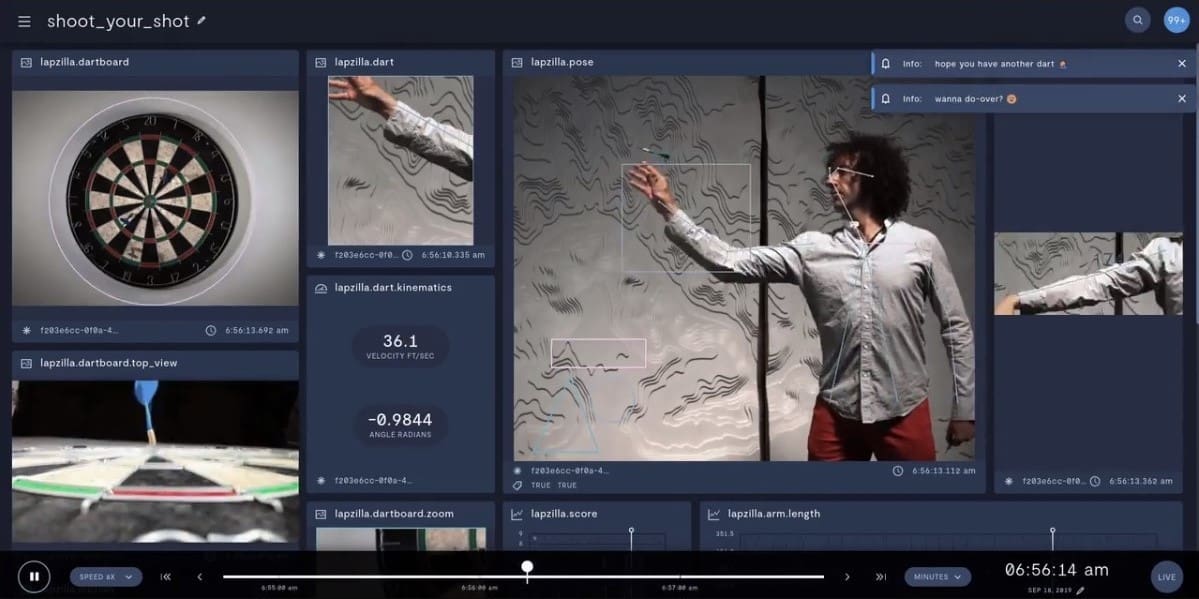
This project puts a high-tech spin on the age-old game of darts! Dubbed “Shoot Your Shot!”, users Terry Rodriguez and Salma Mayorquin used a Jetson Nano and five cameras as a way to capture granular data around the dart thrower’s stance and technique as well as the score of the dart itself.
Analyzing the player’s form is done through pose detection from Nvidia, which we covered above. Based on the poses, the algorithm can estimate the speed with which the dart was thrown. Paired with a history of your last throws, the team was able to create a system to keep track of the points, as well as present a heatmap to show where you’re hitting most often. With this project, you can track the correlation between different poses and the accuracy of your darts!
- Difficulty: Intermediate
- Designers: Terry Rodriguez, Salma Mayorquin
- Project page: Hackster
- Core components: 5x USB cameras, a dartboard
AI Malaria Detection
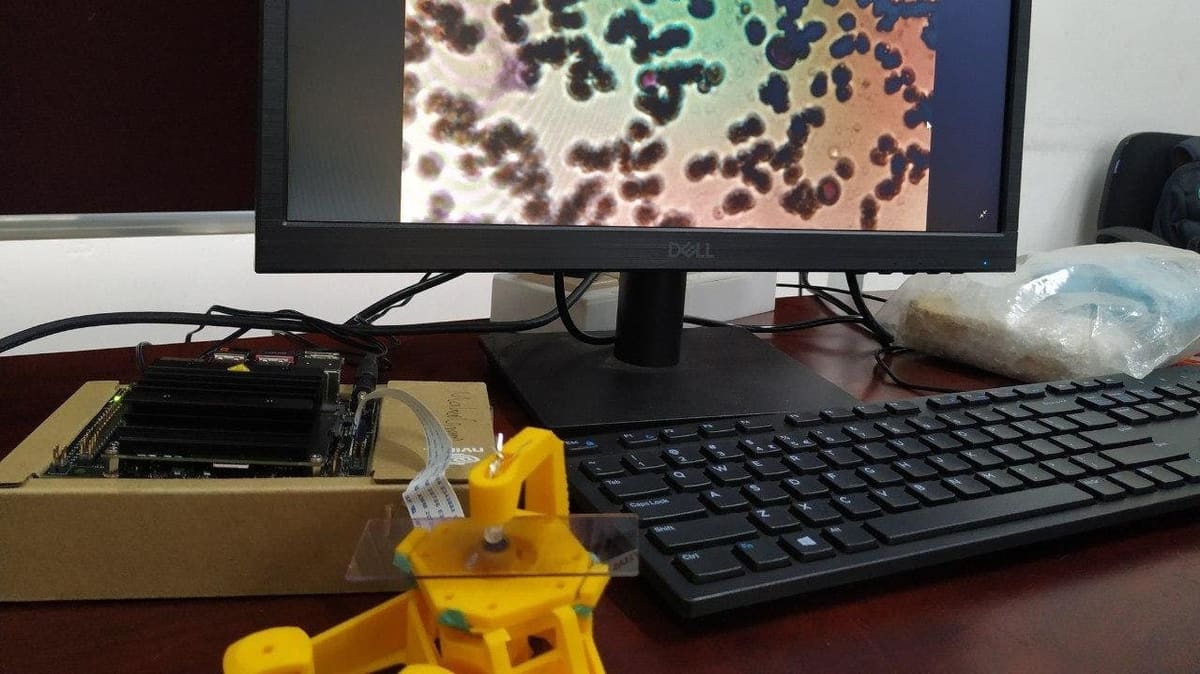
Malaria is one of the most deadly diseases plaguing the modern world. With the proper tools and medications, it can be treated fairly easily, so long as it’s caught quickly. However, getting these tools to remote parts of the world is a challenge, as the tools can be fairly costly, and a skilled clinician is required. Hackster user Salman Faris has attempted to create a solution to this problem with 3D printing and AI!
Using the excellent OpenFlexure project for the microscope body, this project allows for a very low-cost, high-quality digital microscope for quick and easy blood tests. Based on a dataset from the NIH with over 27,000 images of infected blood cells, the Jetson Nano can then use a pre-trained TensorFlow model to quickly detect the likelihood of malaria infection. While Faris was unable to procure a sample for testing, he has made this project open source in the hopes that others can build upon his work.
- Difficulty: Intermediate
- Designer: Salman Faris
- Project page: Hackster
- Core components: Raspberry Pi camera module, smartphone macro lens
Face-following Camera
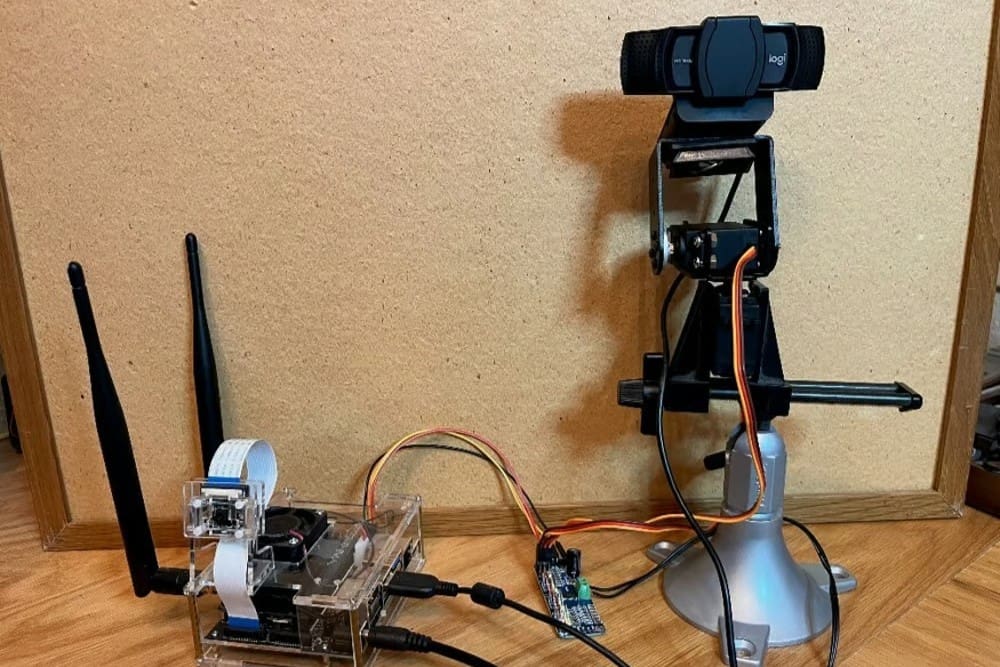
This project consists of a camera, mounted on a rotating tripod, that’s programmed to detect a face. The camera keeps the face center frame by rotating. This project is useful if you’re giving an online presentation or presenting on stage and would like to keep a record.
The GitLab repository includes all the information about the program and the circuits. In the “Examples, Videos, Images, Presentations” folder they include a useful PowerPoint presentation with a short explanation of the functioning principle, images of the setup, and a demo video. This folder is a good place to start exploring the project.
- Difficulty: Intermediate
- Designer: Mike Schoonover
- Project page: GitLab
- Core components: PCA9685 16-channel 12-bit PWM servo motor driver IIC, 2x standard servos, pan tilt servo mount bracket, Logitech HD Pro Webcam C920
Realtime Neural Audio Synthesis
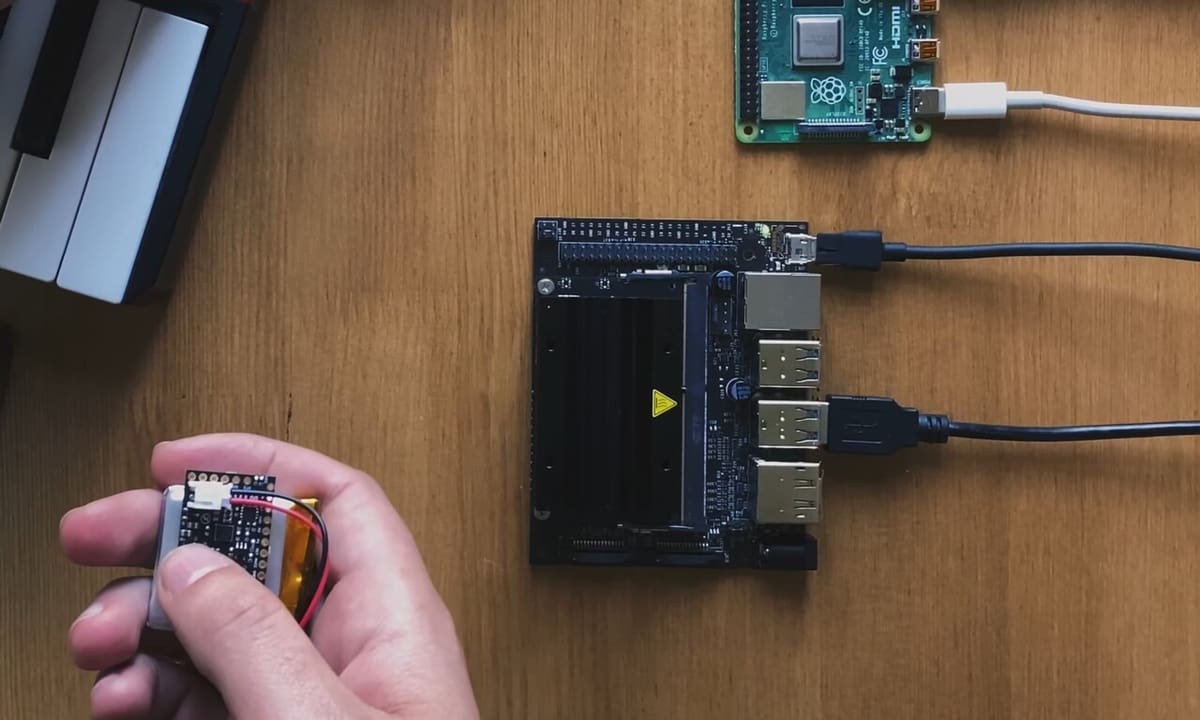
With the help of this next project, you don’t have to be a DJ to put on a great show and create a beat. It allows simple movements to be transformed into incredible sounds to produce truly interactive music and shows. The motion sensor detects and transforms your actions into real-time effects, creating the effect of actually playing an instrument.
To make this possible, RAVE is used, which is a variational autocoder for fast and high-quality neural audio synthesis. Three steps are used to train this model: data set preparation, training, and export. The author indicates that there are two methods for preparing the data set (regular and lazy) but warns that decompressing the files can take up a lot of storage space and increase the load on the Windows CPU when training a large audio corpus.
- Difficulty: Advanced
- Designers: A Caillon, P Esling, ACIDS team at IRCAM
- Project pages: GitHub, Nvidia Community
- Core components: Raspberry Pi 4, motion sensor
AI Animal Sound Detector
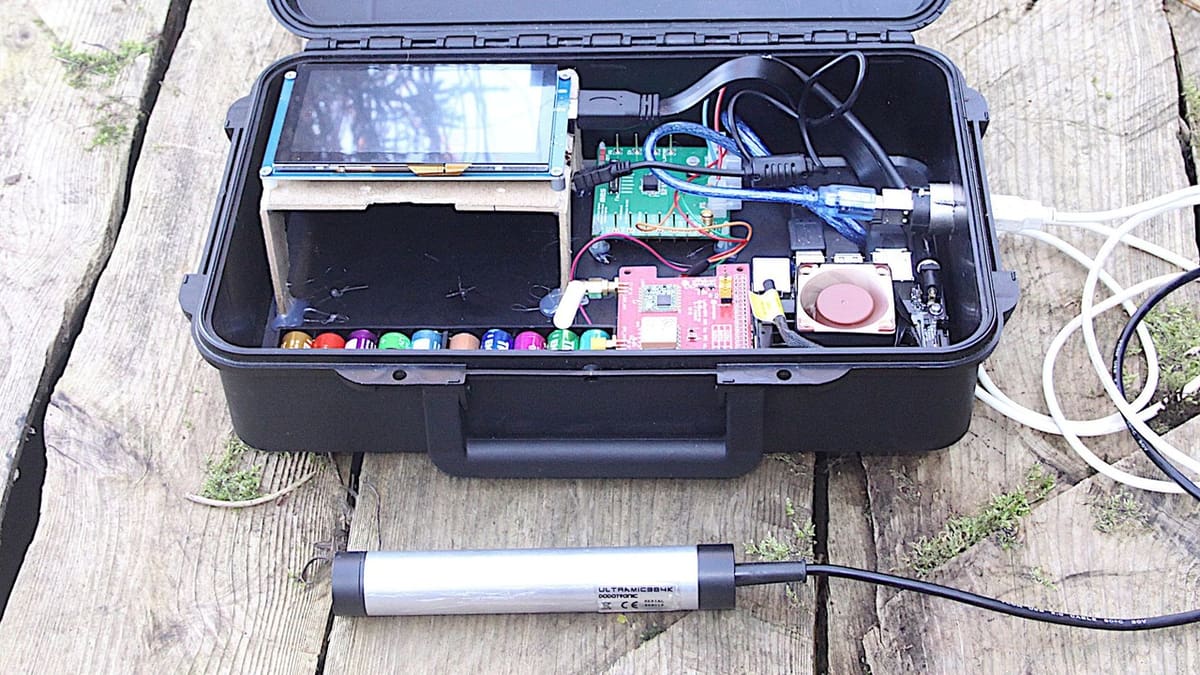
While many of the projects shown in this list are focused on its computer vision capabilities, the Jetson Nano is capable of much more! This project focuses on sound, rather than imagery, for its AI detection. Armed with a simple USB microphone, it’s designed to listen for hours at a time and log any “natural” sounds. The AI is able to specifically detect animal calls and is even able to detect ultrasonic sounds!
In order to avoid trawling through hundreds of hours of audio without animal calls, the software chunks up audio and analyses data to detect any “natural” audio. It’s able to classify the sounds according to what species and genus likely created them, based on the GPS location. Through testing, Capt. Flatus O’Flaherty was able to detect seven different bat species in his local neighborhood!
- Difficulty: Advanced
- Designer: Capt. Flatus O’Flaherty
- Project pages: Hackaday
- Core components: UltraMic 384, 12-V battery, 5″ capacitive LCD
3D Printing Failure Detection
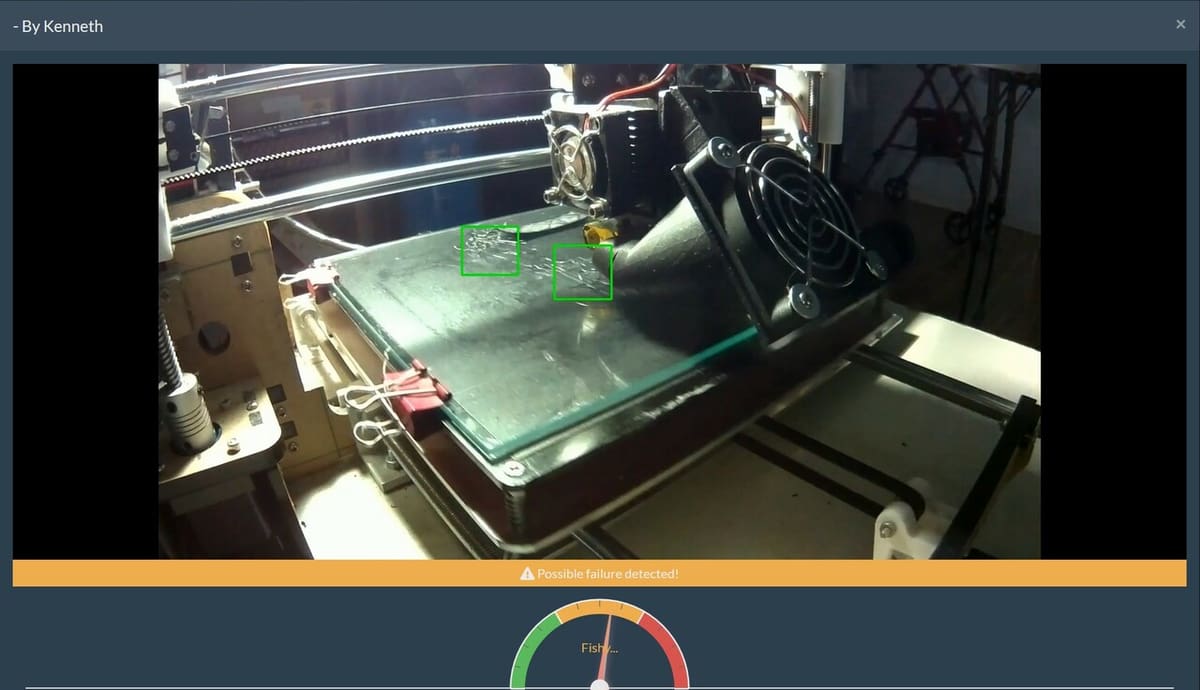
There are many models and 3D printing projects that can take a while to print. Keeping a constant check on the printing process the entire time might not be possible. By setting up OctoPrint, you can monitor and control your printer remotely. All you need is a single-board computer and a webcam.
Before you go ahead with this, make sure OctoPrint is compatible with your 3D printer. To add failure detection to your OctoPrint setup, the main element of this project is Obico (previously known as The Spaghetti Detective), which is an OctoPrint plug-in. It detects 3D printing failures with AI, for which a Jetson Nano is the perfect board.
Once everything is up and running, the server page will indicate whether or not the printing process looks good. At the first hint of failure, the indicator dial will show that something is fishy. You can either receive a notification or simply set the feature to pause printing when failure is detected. Now, you can leave your print running overnight or while you’re away from your printer without concern.
Miscellaneous
These last few projects are so unique that they don’t fall into any of the categories above. Take a look at some other cool applications of the Jetson Nano!
Banknote Counter
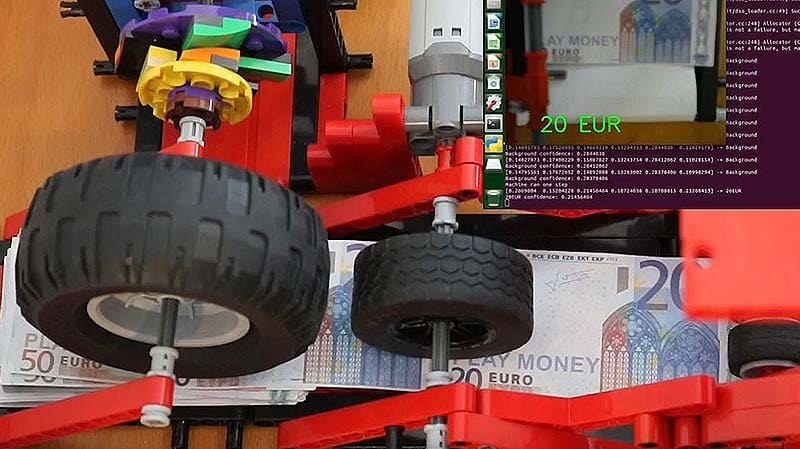
If you’re into technology as a grown-up, chances are you loved Lego as a kid. This project combines the best of both worlds. It uses a Jetson Nano to recognize and classify banknotes, then add them up to count a total.
For the mechanical part of the project (i.e. the components rolling the bills to be counted and organized), the system uses Lego wheels and servo motors controlled by a PCA9685 via I2C. This project is a good introduction to AI training.
- Difficulty: Intermediate
- Designer: Steinheilig
- Project pages: Nvidia Developer, GitHub, YouTube
- Core components: Lego Technic, 4x motors, a servomotor, a PCA9685 servo driver, 2x L293D motor driver shields
Convolution Reverb

Jetson Nano projects aren’t limited to moving parts. Like other SBCs, projects featuring the Jetson Nano can involve signal treatment, images, AI, and in this case, audio applications. This project is a sound mixing board for all your DJ and music production dreams.
This music production set includes real-time convolution reverb, 150+ impulse responses, per-channel impulse response selection, and more. These terms include a lot of music production jargon, so if you don’t get it, it’s time to get reading! With this project, you can enter into the music world and will be mixing up some cool tunes in no time.
License: The text of "25 Best Jetson Nano Projects" by All3DP is licensed under a Creative Commons Attribution 4.0 International License.
CERTAIN CONTENT THAT APPEARS ON THIS SITE COMES FROM AMAZON. THIS CONTENT IS PROVIDED ‘AS IS’ AND IS SUBJECT TO CHANGE OR REMOVAL AT ANY TIME.
